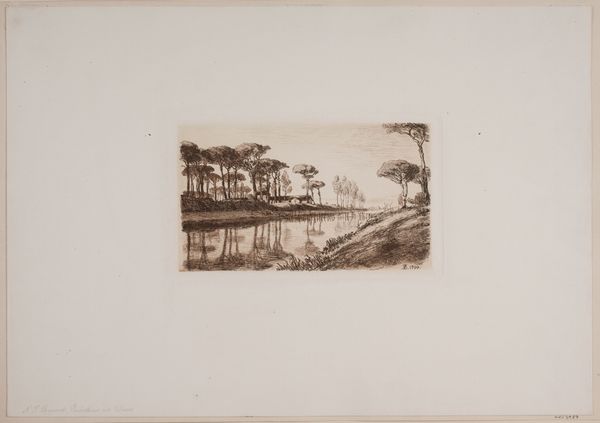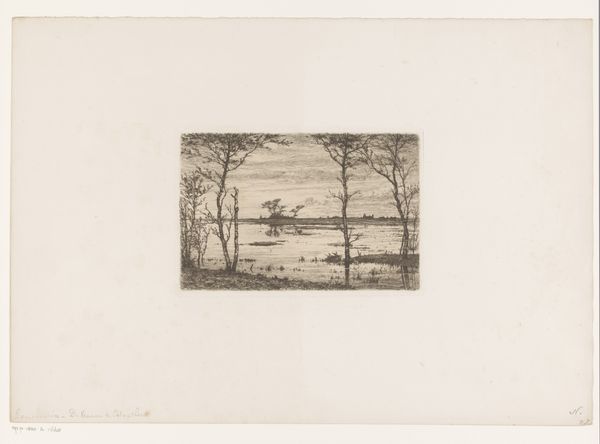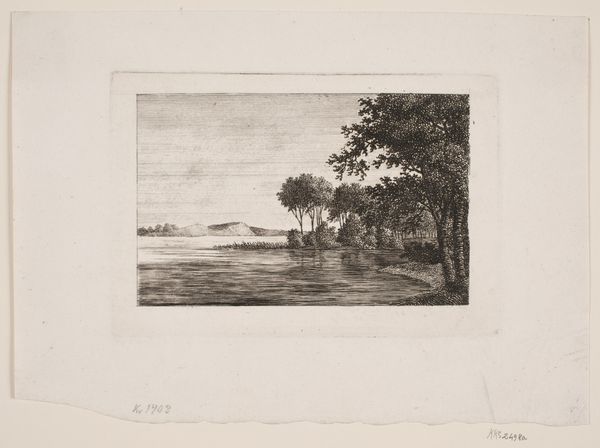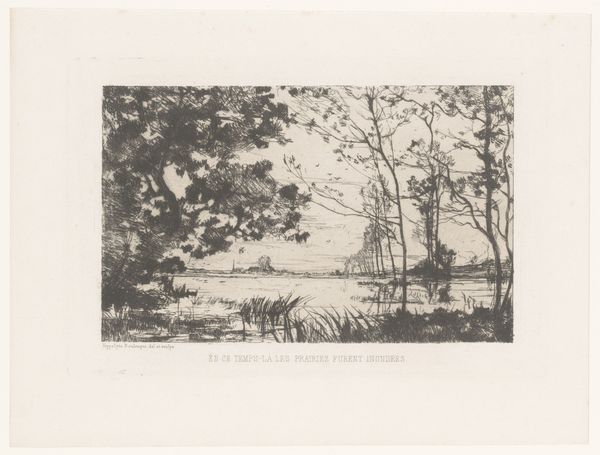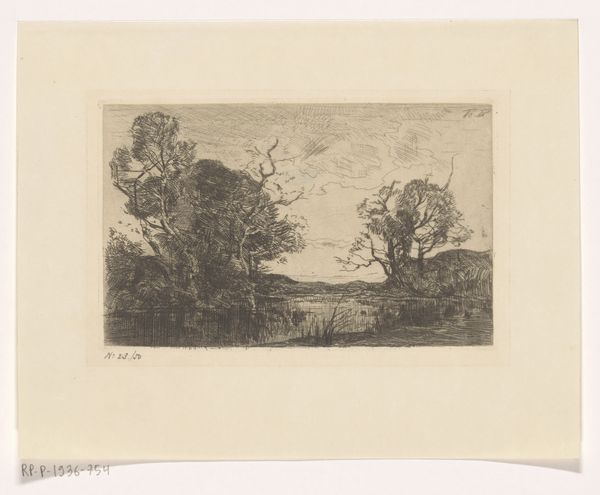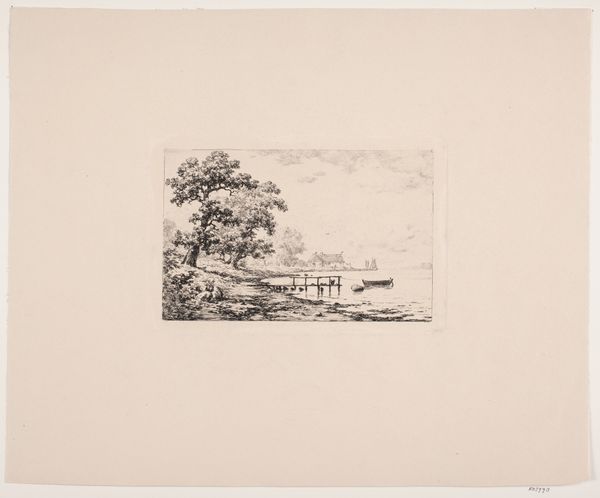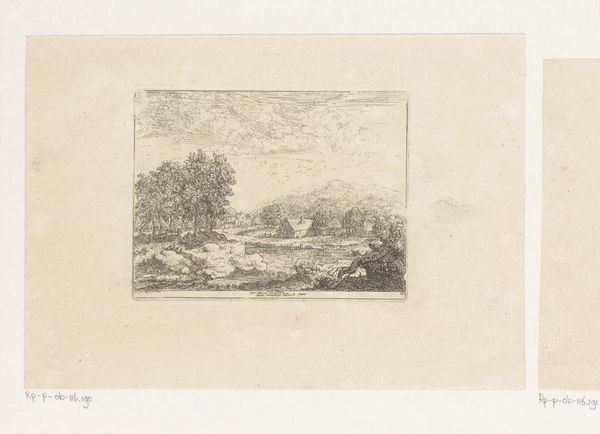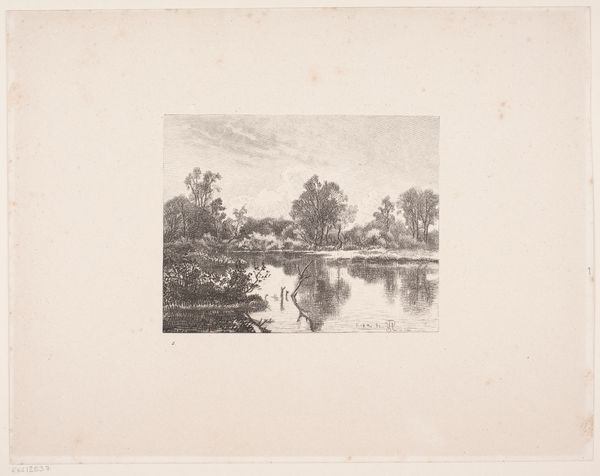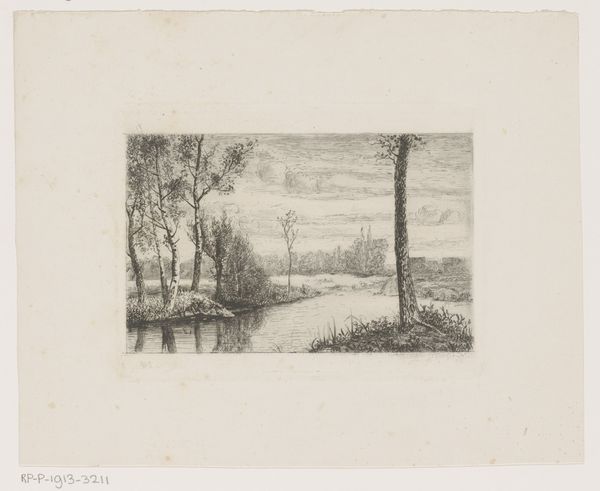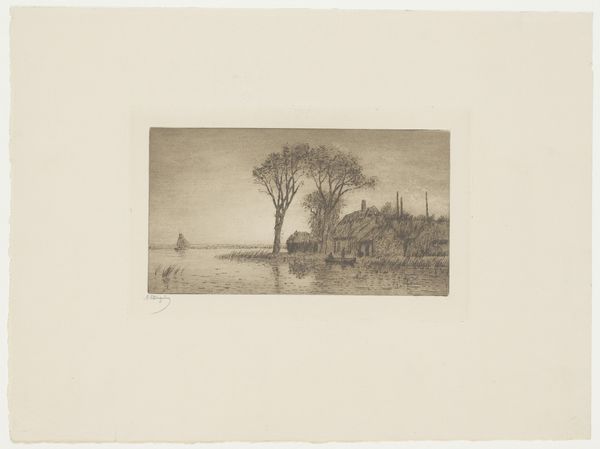
Dimensions: 124 mm (height) x 207 mm (width) (Plademål)
Curator: Here we have Niels Skovgaard’s “Pinjeskoven ved Classe,” an etching dating from 1900. Editor: My initial impression is of a quiet stillness. The mirrored reflections create an almost hypnotic calm, even in the dense texture. Curator: The piece emphasizes a certain structural rigidity, wouldn't you agree? Look at the stark linearity of the trees and their near perfect mirroring in the water. It’s almost mathematically precise, playing with contrasting textures to give the landscape dimension. Editor: It's tempting to read this work in light of the Romantic nationalism surging through Europe at the turn of the century, which included Denmark. Consider that Skovgaard depicts the pinewood—perhaps framing it as an untamed symbol of Danish heritage, in resistance to urban, industrial modernity. Curator: You're layering interpretations drawn from socio-political context, whereas I’m more drawn to the composition itself. Note the formal Renaissance echoes. Skovgaard manipulates light and shadow. The dense foliage serves as the darkest compositional element which gradually recedes toward a light-filled vanishing point on the horizon. It is highly structured! Editor: Yet, it's not merely about aesthetics; there is embedded cultural meaning. What stories do these isolated landscapes tell about humanity's relationship with the environment at the time? Perhaps also of social displacement and longing. Curator: Such associations undeniably add depth. I admit to being less interested in that depth if the underlying forms lack integrity. Look closer at the gradations of light, and you can discover just how effectively the technique amplifies the quiet grandeur of the composition. Editor: By viewing such pieces, particularly those created during societal shifts, we broaden understanding. How might one situate this portrayal alongside the rising concerns about industrialization and its consequences on landscape? Curator: Whether landscape conveys symbolic national importance or an artist merely revels in aesthetic construction, either path provides access to an underlying intention. Editor: Precisely, our divergent views merge towards one aim – the unraveling of meaning imbedded within, around, and beyond the physical artifact.
Comments
No comments
Be the first to comment and join the conversation on the ultimate creative platform.
